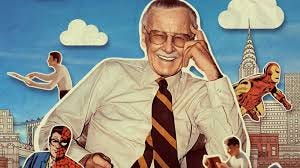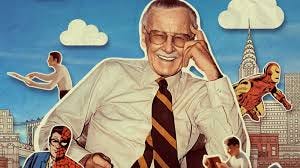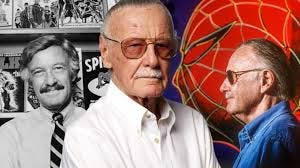#14: Marvel's Stan Lee on one of life's great lessons
Two decades before Stan Lee (born, Stan Leiber) cofounded Marvel Comics—the origin of characters like Iron Man, Spider Man and the X-Men—he got a job as a lackey for Atlas Comics (then Timely Comics) at the age of 17.
I went down and got them their lunch, I did proofreading, I erased the pencils from the finished pages for them.
Since a young age, Lee wanted to be a writer. His goal was to be a novelist, but when the possibility to work at a publishing company came up (even a comic one), he took it With Lee’s ambition as a writer, he soon rose through the ranks, eventually becoming the editor of Atlas.
But Lee soon ran into a wall. Editor of a comic book publisher just didn’t seem like it was a good way to spend his life, and he was going to quit.
Luckily, before he did, his wife offered what Lee called “the best advice in the world.” She told him to “write the book you want to” rather than listening to the owner of Atlas. She said:
Why don’t you write something you would want to read. Get it out of your system. The worst thing that will happen is he’ll fire you — but you want to quit anyway.
Lee listened. The eventual result was The Fantastic Four, an instant success.
After the success of TFF, Lee and his partner Jack Kirby turned Atlas into a new company: Marvel Comics, eventually producing Spider Man, The X-Men, Iron Man, The Black Panther, Thor and, yes, Ant Man.
Throughout all of that, Lee took a lesson, and he reveals that lesson over the course of a recent biographical documentary called Stan Lee.
That lesson is the subject of this OGT.
Forget About “Them”
I used the philosophy of what would I like to read.
One of the characters that Lee wanted to read about was a combination of two characters he loved when he was a kid.
One was based on the concept of Dr. Jekyll and Mr. Hyde by Robert Louis Stevenson. He liked the concept of turning back and forth between two personalities. The other was Mary Shelley’s Frankenstein, from which he took the concept that the ‘monster’ might be a good guy underneath, and that his powers were the result of unfortunate events.
From both of those came the idea of The Hulk.
Taking the “what I would like to read,” as a starting point, he points to a bigger lesson about making anything.
One of life’s great lessons that I have learned is don’t try to please a certain segment of the public. Don’t try to please “them.” Because you don’t really know “them.” Nobody knows them.
But you know yourself.
Lee reflects on what Marvel became. It became a place where they tried to have fun writing what they were interested in seeing.
We started writing stories that amused us. We said, ‘wouldn’t it be fun if we had a green-skinned monster and we called him The Hulk?!
We forgot about the audience. We forgot about the public.
We suddenly started having fun.
The OGT
In Stephen King’s On Writing, he talks about writing the first draft with the door closed, and the second with it open.
The initial insights and ideas have to come from your head. Then the second draft tries to translate that into something comprehensible for the audience. I take Lee’s advice as what to do with the first draft— just write what you would like to read.
Comedians like Kevin Hart, Sebastian Maniscalco and Steve Martin all talk about this regarding their acts. You have to write the jokes that are funny to you, and then you have to find a way to make your style connect with the audience.
But first—write for you.
Are you making that thing you’re making for you. Or are you trying to write it for “them?”
First, write it for you.





